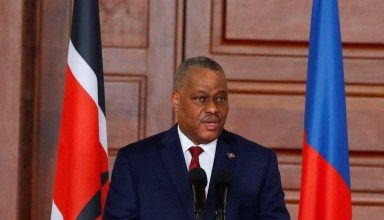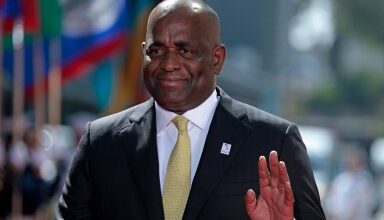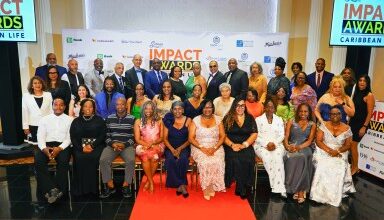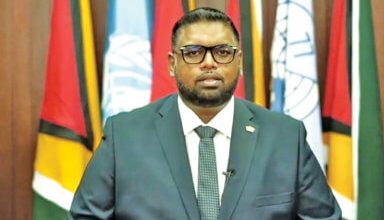Row over Jonestown mass suicide site
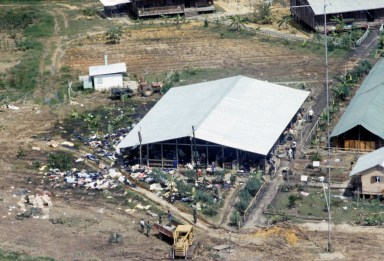
Last week’s announcement that an upstart Guyanese local adventure tour operator plans to begin taking tourists to the now overgrown jungle commune where more than 900 Americans had committed mass suicide by drinking a cyanide-laced kool-aid brew in 1978 has sparked a simmering debate with some supporters adamant that the country should indeed cash in on the tragedy, while critics want it to be left alone as the tragedy had been a horrible blight on the nation.
Wanderlust Adventures GY, which has been looking for new challenges for its nature adventure tourism clients, recently announced US$650 packages for an overnight trip to Jonestown in Guyana’s northwest jungles near the border with Venezuela. The company argues that Jonestown is no different as “a morbid or dark tourism destination” than a slew of others around the world, including the 911 memorial site in New York.
Since the 925 people drank the brew on a steamy Saturday afternoon on Nov. 18, 1978, many at the behest of psychotic leader Jim Jones and as well from fear of being killed by armed guards, successive governments have stayed away from any dealings with Jonestown as its name had become synonymous with Guyana. For many leaders, dealing with Jonestown again would simply reignite the country’s traumatic association with what was back then the world’s largest mass suicide event. However, Wanderlust has other ideas, and it has the backing of the Tourism and Hospitality (THAG), the state’s tourism board, the GTA, and the tourism ministry.
Today, only a little is left of the once-thriving commune 40 miles from the Venezuelan border. Remnants include a rusting cassava mill, a sign welcoming people to Jonestown, and a decaying tractor that had been used along with a trailer to take cult members to the nearby Port Kaituma district, about six miles away where to board light airplane flights for a one-hour trip to the city or river ferry. Tour Director Roselyn Sewcharran is adamant that Guyana should cash in on this niche market as others have done around the globe.
“Throughout the world, there are numerous examples of tours that explore challenging histories to educate and foster awareness. For instance, the Auschwitz-Birkenau Memorial in Poland, the Hiroshima Peace Memorial in Japan, and the 9/11 Memorial in the United States all serve as sites of reflection and education. These locations attract visitors not to revel in tragedy but to better understand the events, honor those affected, and ensure that such histories are not repeated or forgotten. The Jonestown memorial tour follows a similar purpose,” she argued.
However, critics like the University of Guyana Law Professor Neville Bissember said they want to know whose bright idea it was to resurrect the link between Guyana and Jonestown and its negative attendant associations.
“Would it not be a better way to use Jonestown for some touristic (economic?) value if a monument or some memorial was to be erected at the Port Kaituma airstrip to celebrate the lives of U.S. Rep. Ryan and the others who were shot there, as they attempted to leave and carry back the message of what they had seen and heard on their ill-fated visit to Jonestown on Saturday 18, Nov. 1978? In this way, all who use the airstrip at that location would get a chance to pay respects to the fallen heroes without making the trek to visit and “tour” the creepy venue where an American cult of domination and evil had been allowed to thrive,” he said in an open letter to local media.
“All credit should be given to our entrepreneurs and policymakers for thinking outside the box, except that in so doing, we should not transition out of the box and into the rubbish bin (of history),” he contended, though acknowledging that other nations have memorials to tragic events.”
The mass suicide had occurred hours after California U.S. Rep. Leo Ryan had concluded a visit to the commune where he entertained dozens of complaints about harsh conditions, a mentally unstable Jim Jones, mass suicide rehearsals, and a string of other ills.
Jones’ gunmen assassinated him, an NBC television crew, and several others as they were preparing to board a flight back to the city after the visit.
Eleven Guyanese, mostly indigenous Indians, died as well. Wanderlust says it is proceeding with plans, while Minister of Tourism Oneidge Walrond said she will take the issue to cabinet even as “it has my full support.”
“Jonestown is undeniably a tragic part of Guyana’s history, but it is also an event of global significance, offering critical lessons about cult psychology, manipulation, and the abuse of power. Our tour does not seek to exploit or sensationalize the tragedy; it is a carefully researched and thoughtfully designed experience aimed at educating those who want to understand what happened, why it happened, and the lessons the world can draw from it.
“This initiative is not for everyone, nor do we present it as a typical tourist attraction. It is for those who are curious, reflective, and committed to ensuring that history does not repeat itself. Our work has involved extensive research, fact-checking, interviews, and community engagement. The people of Port Kaituma, who lived on the periphery of Jonestown, have been integral to this process and have welcomed the effort to tell the full story,” said Sewcharran.

